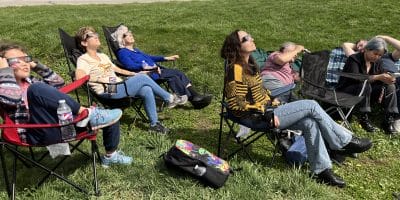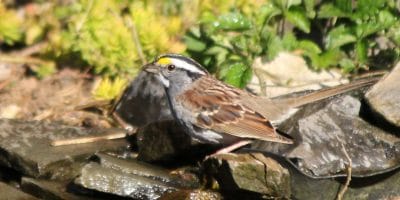
By Jeremiah Knupp, senior contributor // Photos by Holly Marcus, senior contributor
We were walking down a small dirt road near a rural village in central Mexico when my friend’s grandmother stopped abruptly, knelt and quickly plucked several small leafy plants from the ditch, dropping them into the pocket of her apron.
“What was that?” I asked my friend.
She explained that her grandmother had picked a plant known in Mexico as verdolagas. The succulent green is pan-fried in a little bit of oil to yield a lemony-flavored delicacy. While the thought made my stomach rumble, the new-found knowledge made my heart drop. A few days earlier, in anticipation of being out of the country for several weeks at the height of the growing season, I had launched a full-on assault on all the pests and weeds in my garden. In the process, I had pulled up by the armloads the tiny little plant I now knew as the edible verdolagas.
Lesson learned. When I returned home verdolagas was no longer a weed to be torn up by the hands full when I encountered it. Known locally as purslane, it became a valuable plant that I tenderly cultivated when it sprung up on its own in a row of corn stalks or a strawberry patch. In addition to cooking the way I learned in Mexico, it works perfectly raw as a spring salad garnish.

I never looked at the world around me in the same way again. My garden became an “Edible Weed of the Year” club, with a new surprise each spring (this year, it’s producing an overabundance of mugwort). I developed the ethos of a hyena. I contemplate things and ask myself, “I wonder if I can eat that?”
I’m not talking about forcing yourself to gag down things that would qualify as a challenge on Fear Factor. Case in point: we’re currently at the peak of wild asparagus season here in Rockingham County. A mile’s walk from my front door yields about three pounds of fresh stalks every two days. The abundance has introduced me to a Bubba Blue list of all the ways you can eat asparagus, and yes, there is asparagus stew, asparagus salad and asparagus sandwiches.

Harvesting wild delicacies is not limited to the plant world. I once ordered venison – pardon moi, venaison – in a fancy French restaurant.What I was served paled in comparison to the venaison that comes from 100 yards behind my house. I made my way through the rest of the menu – goose, turkey, rabbit, duck – also abundant in the wild and legal for the taking (during the appropriate seasons), in the Shenandoah Valley.
I don’t place a dollar value on the asparagus of what it would cost me in the grocery store, or the pound of beef equivalent of my venison. In these times, the value that I place on my “native” food is in the number of times it keeps me from having to go into the public to visit a grocery store. Mother Nature runs her own food pantry and it’s right outside your back door, from blackberries to black walnuts, morel mushrooms to mustard greens. The knowledge, like the foods themselves, is there for the taking, from the famous Foxfire books, to local foraging classes, to talking with your older relatives that lived through times like the Great Depression.

While the current COVID-19 pandemic has exposed many cracks in our society, one of the most troubling is the fragility of our food chain. In one part of the country milk is rationed to shoppers, while in another, farmers dump their milk down the drain. Meat prices are on the rise, while hogs are being euthanized.
You don’t have to sit there and wait for your food to arrive (or not arrive) from halfway across the country. Eggs, another item in short supply during the early days of the pandemic, can be produced in a few square feet in the smallest of yards, though you’ll find the local bureaucracy harder to manage than the hens. A local cow share, with a little work, can yield the content of the dairy aisle – from yogurt to queso fresco, buttermilk to sour cream. Making butter is so easy even a kid can do it.
My grandmother had a saying, “Anything that’s not in its proper place is a weed.” She first shared the maxim with me while removing a thriving rosebush from her vegetable garden. It was a vegetable garden, not a flower bed. While I’ve applied her insights to many things beyond the plant world over the years, when it comes to my vegetable garden I’ve developed my own philosophy. A weed is anything that you can’t eat.

Journalism is changing, and that’s why The Citizen is here. We’re independent. We’re local. We pay our contributors, and the money you give goes directly to the reporting. No overhead. No printing costs. Just facts, stories and context. Thanks for your support.













